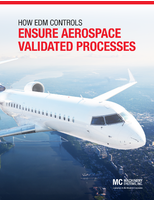3D Modeling Software offers various NURBS options.
Press Release Summary:
formoZ v4.0 includes expanded set of NURBS operations, curves, surfaces, and NURBS-based objects. Product allows re-engineering of facetted objects down to set of connected NURBS patches. Software also includes Loft and Blend and Fillet tools, lights in symbols capability, HPGL format support, and parametric surface editing. Software permits operations on parametric curves and network rendering. Capabilities include Point cloud threading, sketch rendering, and STEP translator.
Original Press Release:
formoZ 4.0 NURBS Curves, NURBS Surfaces and More Nurbz
First plug-ins revealed
Please Visit Booth #6313
National Manufacturing Week, Chicago, Illinois, March 3,2003: On the eve of releasing formoZ 4.0 autoodesosys, Inc. is pleased to showcase the latest developments of its award winning products at National Manufacturng Week. This new version is being demonstrated in booth # 6313.
"Having earned a strong reputation as a general purpose 3D modeler, capable of keeping happy a variety of distinct disciplines, more recently, the development of formoZ has also placed emphasis on the specialized support of product design, engineering, and manufacturing. autoodesosys is delighted to demo the new version 4.0 and demonstrate an impressive example of how robust industrial grade modeling a 3D modeler can offer without sacrificing any of its general purpose virtues", said Chris Yessios, president of autoodesosys.
Here are the most significant features of the new formoZ that deserve the visitors' attention:
o Extensive set of NURBS: To say it plainly, with v. 4.0, NURBS operations that may be available in other exclusively NURBS based applications on the market will be offered in formoZ. More NURBS curves, more NURBS surfaces, and more nurbz, which is how formoZ calls NURBS based objects. Some of the new operations include creating nurbz from UV curves and by tight lofting; creating nurbz cages; attaching, blending, and merging nurbz; mapping pre-drawn shapes on nurbz surfaces and drawing shapes directly on nurbz surfaces; reconstructing nurbz; extending, splitting, trimming, and untrimming nurbz; extracting the control curves of nurbz. And all this without sacrificing any of the other types of objects and operations found in formoZ but not in other NURBS-only applications.
o Nurbz from facetted objects and from metaformz: In addition to the nurbz summarized above, any facetted object can now be transformed to a set of connected NURBS patches of user-specified accuracy. This re-engineering of objects preserves their status as solid or surface objects. In a similar fashion, metaformz, one of the trademarks of formoZ, can also be re-engineered as collections of NURBS patches.
o New Loft tool: This is one more way of generating objects by lofting a set of shapes in 3D space, which has been added to the already extensive repertoire of generative tools found in formoZ.
o New Blend and Fillet tools: More methods for rounding edges of solids, the intersections of surfaces, or the extensions of pairs of surfaces, that are smoothly parametric and, in most cases, editable as surfaces.
o More snapping to keypoints and tangents: The already extensive snapping capabilities of formoZ have been enhanced and refined to include more tangent snapping and snapping to user defined keypoints.
o Lights in symbols: Lights and light groups can now be included in symbol definitions allowing for easy creation of reusable light fixtures. This feature makes lighting studies and simulations significantly easier and faster to create.
o More parametric surface editing: More dynamic surface editing and editing through the controls of parametric surfaces now makes the generation of organic forms easier.
o More operations on parametric curves: Extending, breaking, trimming, connecting, filleting, and blending are new operations that can now be applied to curves, either individually or as combinations, to derive potentially complex composite shapes.
o Network rendering: This newly introduced mode of rendering allows single frame images and animations to be rendered on multiple machines simultaneously, resulting in significant savings in production time. The formoZ network rendering uses TCP/IP technology, which allows rendering to be performed over the internet or on local machines.
o More surface styles: A number of new surface styles (textured surfaces) have been added and previously available surface styles have been enhanced with options. Next to be released in a few months is user definable surface styles.
o New HPGL format support: This is a new translator added to the over 25 already available. In formoZ 4.0 all the export/import translators are offered as plug-ins (see below), which makes their installation optional. An additional translator (STEP) will be offered at a cost (see below).
o Plug-in technology and script language: A variety of operations ranging from object generation and manipulation to rendering and export/import procedures can be developed independently by using the full set of the C and C++ language and by incorporating direct calls to internal formoZ procedures. These operations will be compiled as plug-ins that can be added and executed as any of the regular formoZ operations. The script language is intended for the technically more casual programmers and users. It is a simplified C like interpretive language that offers the means to write new or extend existing operations from within the formoZ environment. These can be easily edited and changed and attached to formoZ icons or menu items, to be executed interactively as any other operation of formoZ.
While the plug-in tools and the script language will be made available to the formoZ user community in 3 to 4 months after the release of version 4.0, quite a few modules of formoZ 4.0 already run as plug-ins. In addition, autoodesosys is happy to announce the release of three major new capabilities as plug-ins to formoZ, which will become available at an additional cost, to be announced by release time. They are as follows:
o Point cloud threading: Deriving properly structured objects by re-engineering unstructured collections of coordinate points, as generated by 3D laser digitizers. These objects may be structured as polygonal entities or may be transformed to NURBS surfaces.
o Sketch rendering: The generation of images that look like they were done by free hand. That is, a variety of effects can be applied to rendered images to produce expressionistic pictures that do not look like they were done on the computer.
o STEP translator: This is one more translator to a parametric format whose popularity increases daily, especially among engineers and product designers.
As the repertoire of formoZ expands with new releases, the program continues its highly competitive edge with its traditional strengths:
o Graphic or numeric input in 2D and 3D.
o Solid and surface modeling.
o Booleans that work.
o Object resizing, stretching, extruding, lathing, unfolding, subdivisions, deformations, displacements, sweeps, metaballs, nurbz, patches.
o Terrain models, Platonic solids, screws and bolts, geodesic spheres, double line wall objects, staircases, helixes.
o Customizable interface.
o Import/export translators to move in and out of other programs.
o Capability to open, read, and translate Windows formoZ files.
o Tremendous technical support team distinguished by customers as "best in the industry."
autoodesosys, Inc. was founded in 1989 with the aim of developing affordable 3D software for a community of designers that was literally thirsty for good modeling tools on the personal computer.
formoZ was conceived to fill in this need and it quickly became the 3D modeling standard and the choice of professionals and educators engaged in the articulation of three-dimensional forms and spaces.
Contact: Alexandria Yessios, VP of Sales & Marketing, ayessios@formz.com
More information may also be found at www.autodessys.com




